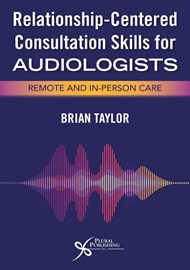With the rise in tele-audiology services alongside changes in hearing aid technology, there is an added importance in providing our patients with the care they need within our clinical settings and remotely. This book highlights the key skills to be mindful of when conducting these appointments within audiology services as a whole.
The book itself combines theory and practical explanations of implementing relationship-centred care within our clinics. Chapters of the book explain a variety of models used within the healthcare system, to detailed skills and techniques in how to implement relationship-centred care within our clinics.
Topics discussed in a chronological order for ease of reading, alongside implementation of each chapter beginning with a case study, is a helpful approach to what the chapter will go on to discuss. The book is structured in a clear and concise manner with figures to help cement theoretical knowledge alongside relevant research to support the practical benefits. A particular highlight for me was the ‘points to ponder’ section found within each chapter. These are short paragraphs with helpful reminders/tools throughout. They can include points discussed previously in the book, which is relevant to what is being discussed later; this helped in keeping the flow of the book easy to read.
Taking it ‘back to basics’ is a key highlight of this book. With hearing loss being a chronic condition, it was refreshing to go over basics. Aspects, such as taking a patient’s history, is important to ensure we are obtaining sufficient information and highlighting patient-specific goals.
Overall, I believe this book is a key read and good value for money. No matter what stage of your career that you are in, the book offers a good insight and a kind reminder to clinicians to ensure that we are individualising our care plans to our patients.




